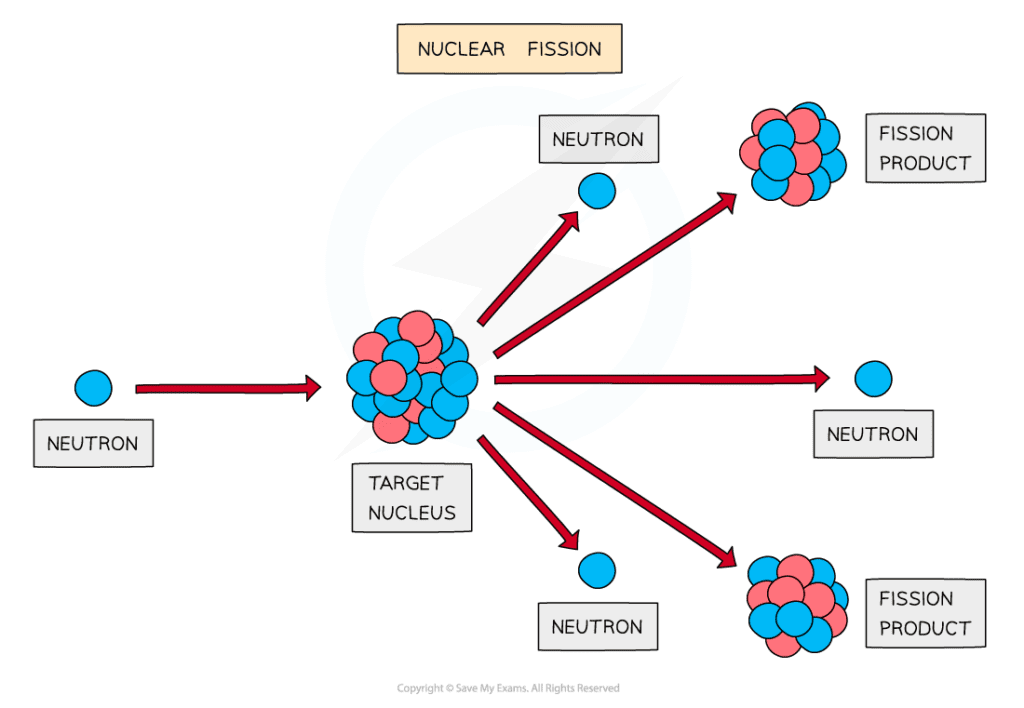Nuclear Energy (Edexcel GCSE Physics): Revision Note
Nuclear Energy
The nucleus of the atom stores a huge amount of energy – roughly one million times greater than the amount of energy involved in chemical reactions
As a result, nuclear reactions have the potential to transfer large amounts of energy (as seen in nuclear bombs)
If harnessed in a safe way, nuclear energy could reduce or replace our dependency on fossil fuels, reducing pollution and the emission of greenhouse gases
This energy can be released nuclear reactions such as:
Fusion
Fission
Radioactive decay
Fusion is when:
Two small nuclei join together to produce a larger nucleus
Nuclear fusion does not happen on Earth naturally, but it does in Stars
However, fusion reactors can be made artificially
The fusion of deuterium and tritium (isotopes of hydrogen) fuse to form helium with the release of energy
The amount of energy released during nuclear fusion is huge:
The energy from 1 kg of hydrogen that undergoes fusion is equivalent to the energy from burning about 10 million kilograms of coal

The fusion of deuterium and tritium to form helium with the release of energy
Fission is when:
One large nucleus splits into two smaller nuclei
The large nucleus that splits is often referred to as the parent nucleus
The smaller nuclei that are split from this are referred to as the daughter nuclei
This is the process behind nuclear power stations

The fission of a nucleus, such as uranium, to produce smaller daughter nuclei with the release of energy

You've read 0 of your 5 free revision notes this week
Sign up now. It’s free!
Did this page help you?
